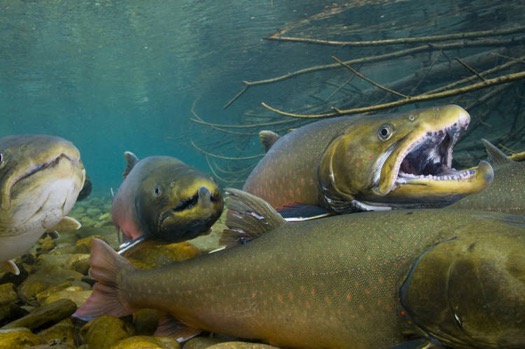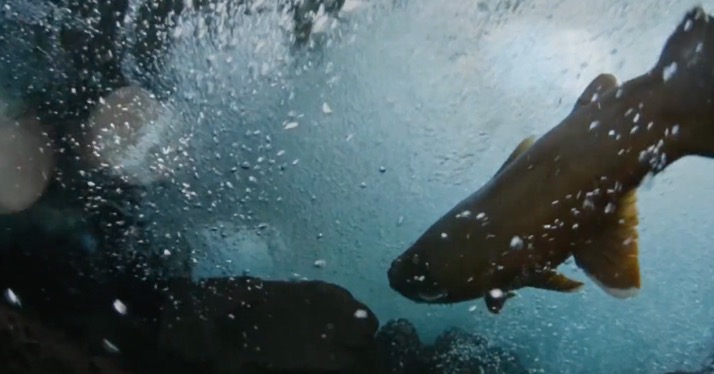Spawning Migration
Bull trout can travel a long way when they migrate. Their migrations are among the longest of all for species of trout that migrate in rivers and streams. Historically in the Jocko, every year spawning bull trout migrated over 165 miles to their spawning grounds, and after spawning, they turned around and covered the same distance on their return migration.
Two of the life-history forms of bull trout—fluvial and adfluvial—make migrations as a normal part of their life cycle.
Fluvial
Fluvial fish hatch in streams, migrate to a larger river to mature, and return to their natal stream to spawn. Every year, fluvial bull trout migrate from the Lower Flathead and Clark Fork Rivers to the headwaters of the Jocko to spawn. Starting in the summer, when water temperatures are warmest and the flow lowest, they leave the large rivers where they spend most of their adult lives and travel up the Jocko to its headwater tributaries—the North, Middle, and South Forks of the Jocko—where they spawn. After spawning, they return to the Clark Fork and Flathead Rivers.
Adfluvial
Adfluvial fish hatch in streams, migrate to a lake or reservoir to mature, and return to their natal stream to spawn. Historically, every year, adfluvial bull trout migrated from Lake Pend Oreille in Idaho and swam to headwater streams to spawn. Starting in the summer, when water temperatures were warmest and flows lowest, some of those fish migrated out of the lake and into the Clark Fork River. From there they entered the Flathead River and finally the Jocko River. They traveled up the Jocko to its headwater tributaries— the North, Middle, and South Forks where they spawned. After spawning, they returned to Lake Pend Oreille, traveling 165 miles each way.

